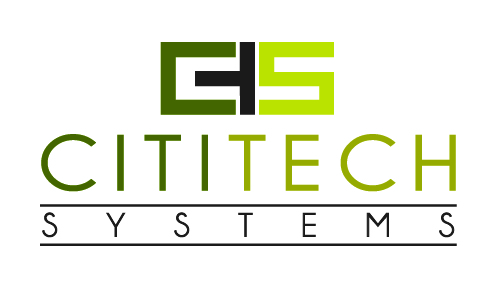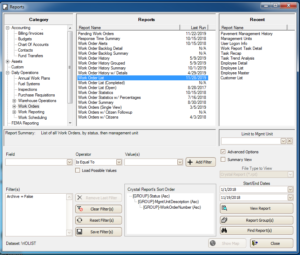Note from the Editor
Hello!
Read on to meet our new Guru, check the news, and find out what’s new! …

CitiTech News
As 2018 draws to a close, it’s a good time to reflect on what we’ve done this year and what we have planned for 2019.…
What’s New?
MORE Report Changes!
The reporting module in CMS is undergoing EVEN MORE exciting revisions and improvements, thanks to input from you….
Guru’s Corner
New GURU!
We’re proud to introduce our new CitiTech team member to you, our Customers!….
Features & Functionality
FEMA Functionality in CMS Makes FEMA Documentation Easy!
In the U.S., likely natural disasters include hurricanes …
Cool Stuff!
Business Process Improvement (BPI) – what is it, and how can my organization achieve it? …
Editor’s Note
Hello!
Read on to meet our new Guru, check the news, and find out what’s new! Learn more about CMS features, and find out about BPI in the “Cool Stuff!” section.
Enjoy the newsletter, consider being featured in the next one, and keep the suggestions and feedback coming. We’ll listen.
By Tari Muth
CitiTech News
As 2018 draws to a close, it’s a good time to reflect on what we’ve done this year and what we have planned for 2019.
Thanks in large measure to the Alabama Department of Transportation, we devoted a significant amount of time to improving CMS performance; both in terms of how we present data on the screen and how we report information. Our greatest strength has been our ability to collect huge amounts of information and use advanced tools and techniques to deliver mission-essential information. With these huge data sets, large users such as the Alabama and Mississippi Departments of Transportation were experiencing unacceptable delays in processing Daily Work Reports or generating complex reports for a year’s worth of data, such as the Work Report Transaction Detail Report.
We focused on improving data entry and reporting performance and are pleased to report that CMS now delivers comprehensive reports for extended date ranges in minutes, rather than hours. Collecting data in Daily Work Reports, a critical and required step, has improved as well. Improving performance in data collection and reporting was an important effort that required several months to improve and is now available to all users. This improvement is an example of how users help us identify and resolve stress points and improve CMS functionality.
Since we’ve made significant performance improvements, we are now shifting our focus to bridging the gap by enhancing web and mobile functionality. CMS has a proven track record as a desktop application. We are currently researching the most effective methods of providing connectivity to remote users without sacrificing performance or functionality. Our goal is to provide a consistent workflow across most prevalent operating systems without sacrificing productivity regardless of internet connectivity.
We’re excited about this future functionality in addition to our Desktop application. It will allow CMS users to use Work eOrders on tablets and/or cell phones in the field where they can be completed and saved. We’ve already developed at least one proof-of-concept prototype. As we get closer to having fully-developed applications, we’ll announce them and welcome CMS users to be beta testers.
And, finally… best wishes for the upcoming Holiday Season. We hope 2019 brings you good health and happiness.
By Brian McKiernan
What’s New? MORE Report Changes!

The reporting module in CMS is undergoing EVEN MORE exciting revisions and improvements, thanks to input from you.
Once you get the latest update, you’ll notice that the report screen has changed. A few improvements we’ve made: the Date Range prompt is now on the screen (rather than having to click on “View Report” to be prompted), you can now view the new Data Reader reports using many different file types (like crystal report, adobe pdf file, excel spreadsheet, text, or Microsoft word document), and buttons that clear, reset, or save the filter(s).
The traditional reporting mechanism generates a memory Data Set containing data and is fed to a crystal report document. When reporting requests cover multi-year date ranges or use wide-open selection criteria (or no selection criteria at all), these memory datasets would sometimes exceed the capacity of the .NET framework to hold such huge amounts of data.
The new approach, which is being rolled out in increments, uses a Data Reader. This sends a continuous stream of data that is fed by the database (instead of holding all the data at once). The Data Reader will continuously provide information to the crystal report document (or other file type), thus lessening or eliminating the occurrence of Out-of-Memory exceptions. Additionally, you can look forward to your reports being generated much faster!
Changes started with the large reports that have often caused users issues when trying to run huge date ranges. We have revised the reports we initially released, to improve accuracy and also to fix several scenarios we didn’t originally take into account, all thanks to our customers’ feedback. They are now faster and more accurate.
More reports that use the Data Reader are coming in future Web Updates… so stay tuned!
By Tari Muth
Guru’s Corner – New GURU!
We’re proud to introduce our new CitiTech team member to you, our Customers!

Meet Todd Bagley, our new developer, who hails from Wisconsin. Todd served in the Air Force as a Russian linguist and a Pararescueman after school. After completing his service he began working in the technology sector, focusing on AI and machine-learning using logistic regression. This led him to developing aircraft systems for the military, where he developed autonomous systems for the Predator and Reaper, also serving as a pilot on overseas assignments. In his spare time, Todd still pursues his love of flying along with the creative endeavors of music and photography.
Todd has been developing process-centric applications for 20 years and is looking forward to bringing this experience to CitiTech.
Welcome to the CitiTech team!
By Tari Muth
Features & Functionality
FEMA Functionality in CMS Makes FEMA Documentation Easy!
In the U.S., likely natural disasters include hurricanes, floods, tornadoes, heat waves, droughts, cold waves, snowstorms, blizzards, landslides/mudslides, wildfires, famine, earthquakes, and tsunamis. Or, earthquakes FOLLOWED by tsunamis (1964). And last – but not least – volcanoes!
No one needs to tell you, none of them are fun. Chances are you know someone affected, or have been affected yourself. Deaths, injuries, and damage paralyze communities, and it will take months – or years – to recover.
Flooding across the Midwest in June 2008 affected more than 11 million people, the most people affected by a natural disaster in U.S. history. Wildfires cost lives and acreage. More than 10 MILLION acres were lost in 2015!
Unfortunately, natural disasters will happen. However, if the disaster is documented, FEMA will reimburse some of the costs for emergency operations and disaster cleanup.
CMS allows you to set up a disaster record, and tie FEMA rates to YOUR rates (so rates match what FEMA will reimburse, regardless of what you usually charge for equipment). When you specify the disaster in a Work Report, CMS captures those “alternate” rates for the reports you’ll need, making it easy to submit paperwork to FEMA for reimbursement. Check it out!
Here’s where I got my facts about natural disasters:
https://www.statista.com/topics/1714/natural-disasters/
By Tari Muth
Cool Stuff!
Business Process Improvement (BPI) – what is it, and how can my organization achieve it? Business Process Improvement (BPI) is an approach designed to help organizations redesign their existing business operations to accomplish significant improvement in production. Effective BPI helps to generate promising results in operational efficiency and customer focus.
BPI, when implemented by means of a structured methodology, helps organizations to reduce their operational costs and cycle time, enhance customer service and improve the quality of their services.
The significance of BPI is remarkable in today’s competitive market as work processes are extensively affected by technology. An effective way to achieve a successful Business Process Improvement is to concentrate more on the business requirement than on the technology used to achieve the solution.
BPI aims to reduce waste and/or variation in processes to achieve the desired outcome by using existing resources in a better way. The ultimate goal of BPI is to bring out a drastic change in an organization’s performance, rather than bringing out the changes in incremental steps.
Because BPI implementation is a project, all project management principles apply. This ensures well-organized improvement processes without any conflicts.
In a simplistic view, these steps can be defined like this:
- Define the existing processes and structure in the organization.
- Identify the outcomes that would add value in achieving the organization’s objectives and the best ways to align the organization’s processes to achieve these outcomes.
- Reorganize the workforce in the organization based on the desired outcomes by means of the various tools available in the BPI process.
More than one approach exists. For example, I found one website that uses information developed by researching methodologies employed by institutions of higher learning called “RAPID Process Improvement Methodology”. It’s a customized way to assess business processes and make recommendations for improvement. If you ever wonder how to get started, this website contains checklists, how-to guides, samples, and templates!
Their steps are: Review the Problem, Assess the Current State, Plan for Change, Implement Changes, and Determine Success.
CMS can help you improve the process! Work smarter, not harder. One great example of using CMS to improve processes is Mississippi Department of Transportation. They analyzed one activity (mowing) and found one district was more cost-efficient than the rest. By standardizing that district’s processes state-wide, they were able to do the same amount of work more efficiently state-wide, and saved $2.4 million – annually – for one activity!
Find out for yourself how improving the process of doing work can save time and money.
Source:
https://www.uillinois.edu/cio/services/bpi/business_process_improvement_methodology_toolkit/
By Tari Muth

